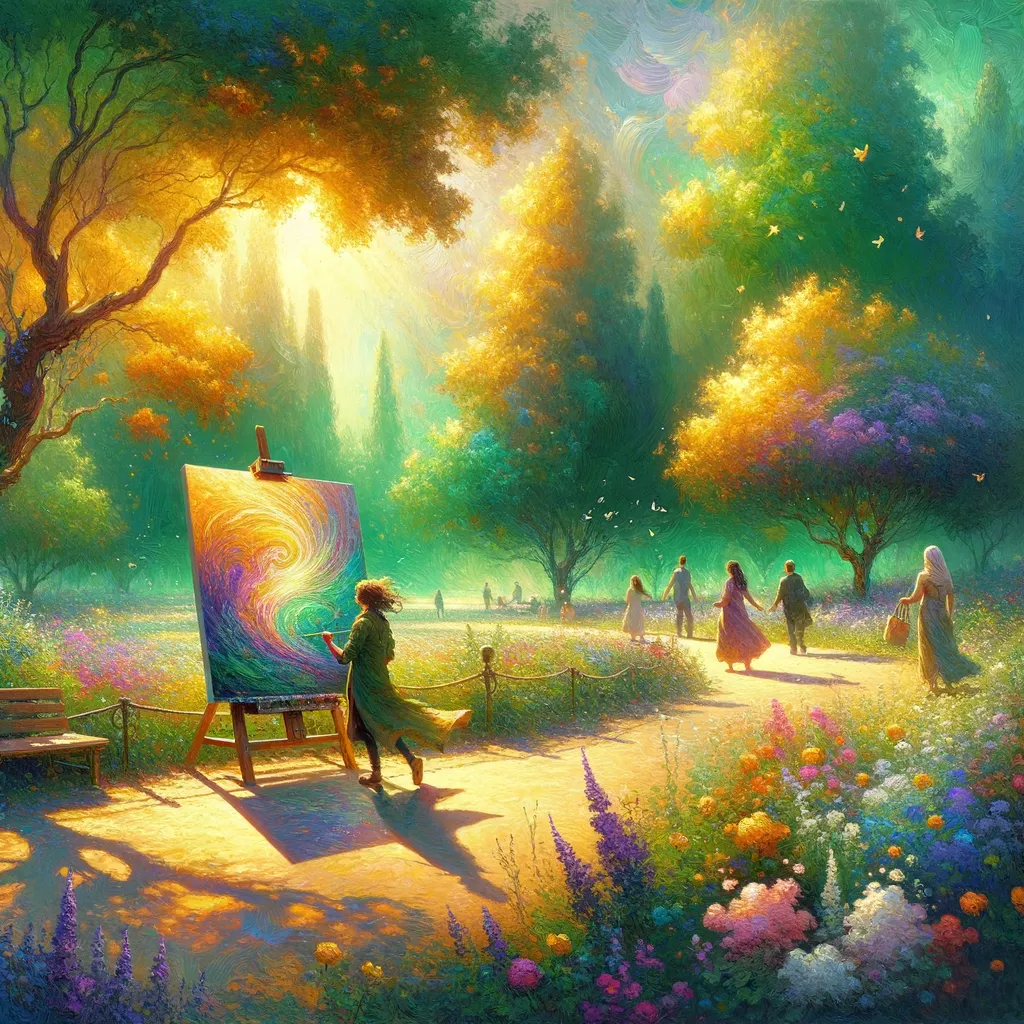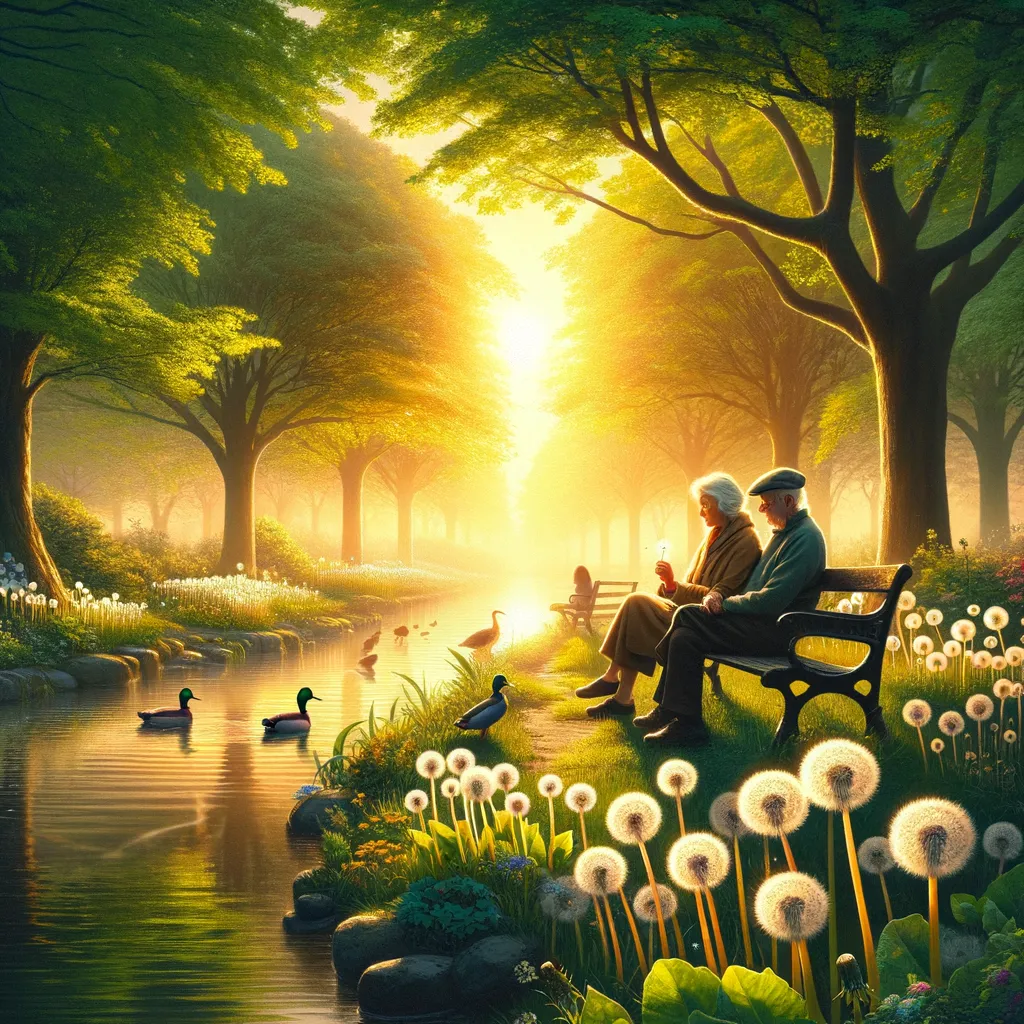Betrayal’s Canvas: Unveiling Beauty in Pain’s Wake
In a sun-drenched park, vibrant colors contrasted sharply with the turmoil within, a heart weighed down by betrayal from a trusted friend. The moment the truth unraveled, a once-cohesive tapestry of life frayed, leaving a landscape of confusion and hurt. Yet, amidst the chaos, inspiration struck, illuminating the path toward transformation through art, where each brushstroke became a ritual of catharsis, blending sorrow with resilience. As the canvas evolved into a stunning testament of growth, it mirrored the shared vulnerabilities of a community drawn together by their own stories of healing. Ultimately, the journey revealed that betrayal could be a catalyst for profound insights, inviting the possibility that every wound might just lead to a new beginning.
In the memory of July 19, 2016, I found myself standing in the middle of a sun-drenched park, surrounded by a riot of colors that seemed to mock the tumult within me. The air was thick with the scent of blooming jasmine and freshly cut grass, yet it felt as if the world had dulled, the vibrancy muted by a betrayal that had just shattered my reality. The laughter of children playing nearby echoed like distant thunder, a reminder of simpler times, times before my heart became a battleground of confusion and hurt.
The betrayal had come from someone I had trusted implicitly, a friend who had woven themselves into the fabric of my daily life. The moment the truth unraveled, it was as if a vibrant tapestry had been ripped apart, leaving jagged edges and frayed threads. I felt the weight of disbelief pressing down on me, a leaden cloak that suffocated any flicker of joy. I stood there, frozen in that sunny park, grappling with the duality of love and resentment swirling within me, each emotion vying for dominance.
As the sun climbed higher, casting long shadows that danced on the ground, I realized that I had a choice to make. I could either allow this moment to define me, to become a weary vessel of hurt, or I could channel these intense emotions into something transformative. Inspiration struck like a sudden breeze, rustling the leaves around me. Art had always been my refuge, a sanctuary where feelings could be expressed and transformed. Perhaps it was time to pick up the brush again, to wield it like a sword against the darkness that threatened to engulf me.
I returned home that day with a heart heavy but determined. The canvas awaited, a blank space ready to absorb my turmoil. With each stroke, colors collided and blended, mirroring the chaos of my thoughts. Deep blues and fiery reds battled on the canvas, representing the sorrow and anger battling for dominance within me. The act of painting became a ritual of catharsis, allowing me to weave my pain into something beautiful, something that could inspire rather than destroy.
Days turned into weeks, and the canvas transformed into a landscape of emotional upheaval. What began as a chaotic explosion of color gradually evolved into a narrative of resilience. The betrayal, once a dark cloud looming over me, became a mere backdrop to a story of triumph. Each brushstroke told a tale of recovery, of finding strength where I thought there was none. I discovered that vulnerability could be a canvas in itself, a space where raw emotion could be embraced rather than hidden away.
The surprise lay not just in the art I created but in the community that blossomed around it. Friends and strangers alike began to resonate with my work, sharing their own stories of betrayal and healing. What started as a personal journey of discovery became a shared experience, a tapestry woven from the threads of our collective vulnerabilities. I realized then that we are all intertwined, our stories echoing in one another’s hearts, each betrayal a piece of the larger human experience.
Yet, amidst this transformation, a question lingered: Was it possible to forgive the one who had betrayed me? The thought danced on the periphery of my mind, teasing me with its complexity. I began to see forgiveness not as a gift for the betrayer, but as a liberation for myself. It became clear that holding onto resentment was like clutching a thorny rose—beautiful yet painful. The real discovery was in understanding that forgiveness could pave the way for healing, a gentle release from the shackles of anger.
As the months unfolded, I stood before my final piece, a culmination of my journey—a stunning representation of both grief and grace. It was not just a painting; it was a testament to resilience, a reminder that our stories can be rewritten, our narratives transformed. In that moment, I understood that betrayal, while painful, could also be a catalyst for profound growth, a turning point that leads us toward deeper self-awareness and understanding.
In the quiet aftermath, I was left with an unexpected gift: the realization that our emotional landscapes are not defined solely by the betrayals we endure but by how we choose to respond to them. As I gazed at the canvas that bore witness to my evolution, I pondered the deeper questions of life and connection. What if every betrayal is not an end, but a new beginning? What if our greatest wounds could lead us to our most profound insights?
Betrayal may shatter the heart, yet it also offers the brush to paint a new narrative of resilience, transforming pain into a vibrant tapestry of growth and connection.



